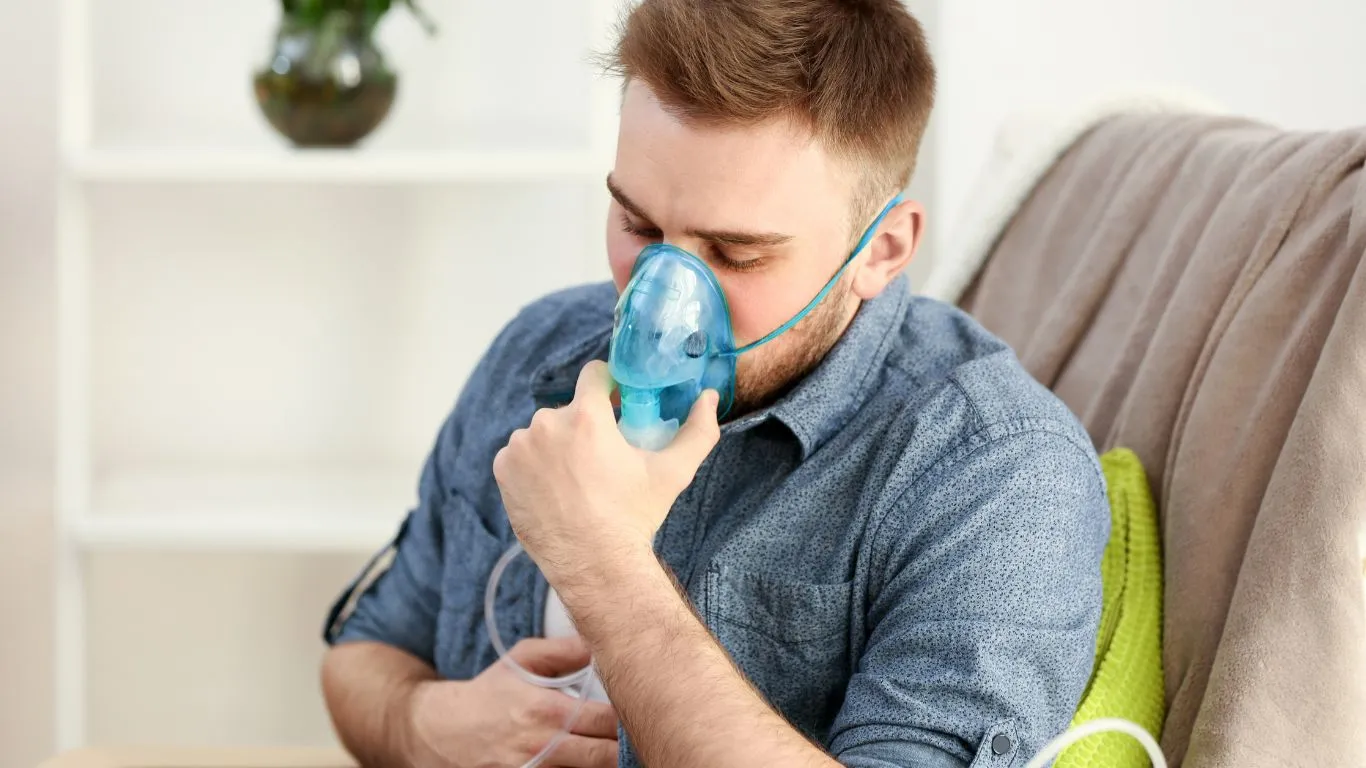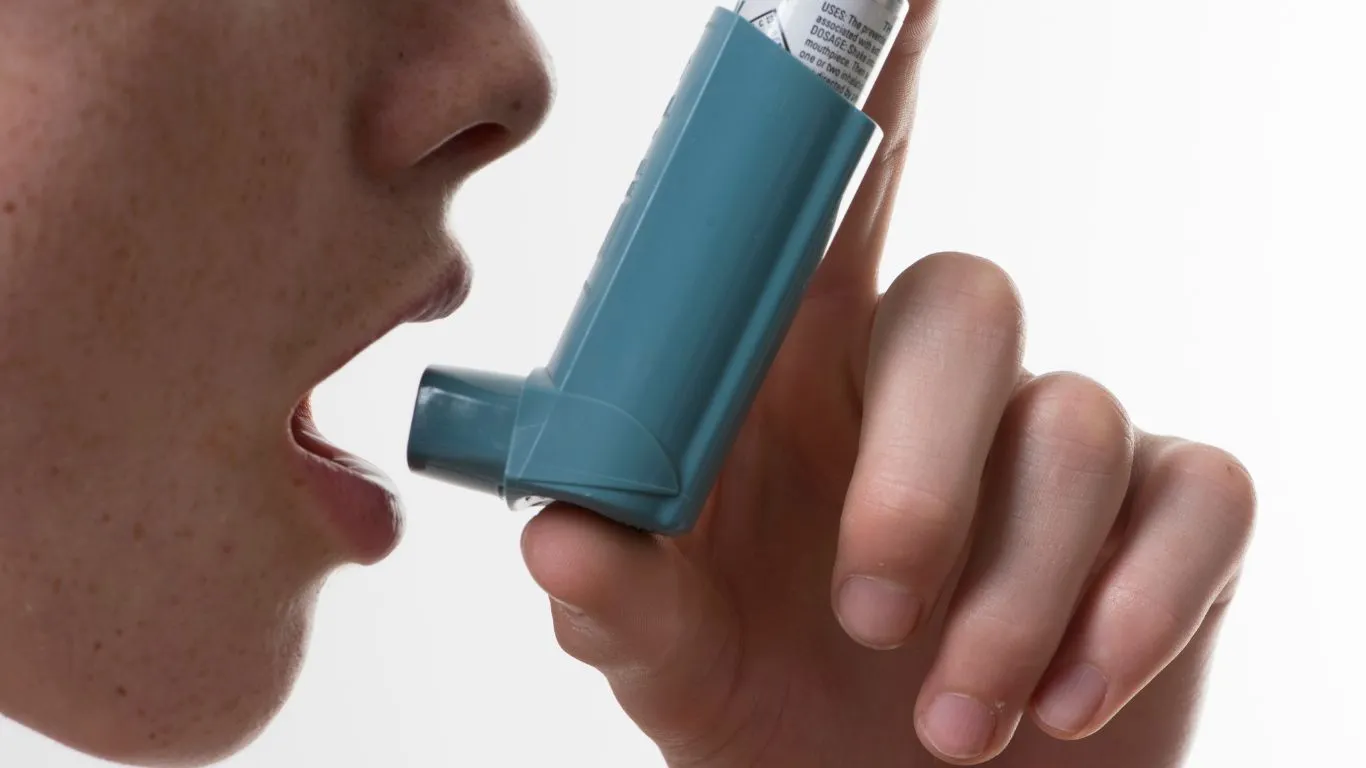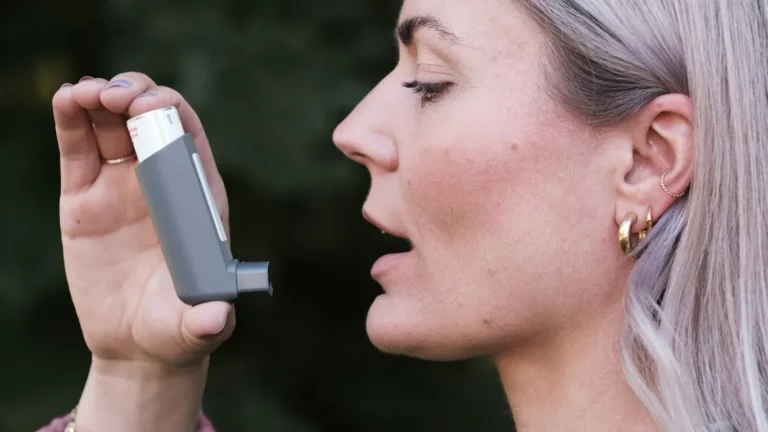Can Air Travel Worsen Asthma? Shocking Truth Every Flyer Should Know
As a Pulmonary Nurse, I’ve seen firsthand how air travel can have a significant impact on individuals with asthma. The experience of flying, while exciting, can also introduce a number of triggers that might worsen asthma symptoms. But can air travel worsen asthma? In my practice, many of the patients I’ve worked with express concern about whether the air quality, pressure changes, or even cabin humidity during flights can exacerbate their asthma. Well, the short answer is: yes, it can. And in this article, we’ll dive deeper into why this happens and what you can do to minimize risks when flying. Let’s break it down together.
Understanding the Impact of Air Travel on Asthma

When you think of air travel, you probably imagine sitting back, relaxing, and enjoying the journey. However, for people with asthma, that experience can quickly turn into a challenge. The confined space, dry air, and cabin pressure all play a role in how your lungs respond during a flight. The cabin environment, while generally comfortable for most passengers, can trigger asthma symptoms in those who are susceptible.
Before we explore how air travel can worsen asthma, it’s important to understand a few basic facts about asthma itself. Asthma is a chronic condition that affects the airways in the lungs, causing them to become inflamed and narrow, leading to breathing difficulties. Various factors like allergens, cold air, exercise, and even stress can trigger asthma symptoms. In the case of air travel, the environment inside the plane can add additional stressors that make it harder for someone with asthma to breathe normally.
The Influence of Cabin Air Quality

One of the primary concerns when flying with asthma is the quality of the air inside the cabin. Airplane cabins are pressurized and ventilated, but the air inside tends to be dry. This dry air can dehydrate the mucous membranes in the airways, making it more difficult to breathe and potentially triggering asthma symptoms. In fact, many asthma sufferers report feeling a tightening in their chest or experiencing coughing and wheezing during or after flights. It’s not just a coincidence — it’s the body’s reaction to an environment that’s much drier than the air we’re used to.
The dry air can also worsen other respiratory conditions. When the body is dehydrated, it becomes more difficult for the lungs to function properly, and inflammation can worsen. For asthma sufferers, this could lead to more frequent flare-ups, especially if you have pre-existing airway sensitivity.
Pressure Changes and Asthma
The change in air pressure during a flight is another factor to consider. As a flight ascends and descends, the pressure in the cabin changes, which can affect your breathing. For those with asthma, this pressure shift can cause airways to become more reactive. Some individuals may experience difficulty in adjusting to the changes in pressure, which could exacerbate asthma symptoms like shortness of breath, chest tightness, or even an asthma attack.
Not to mention, if you’re already experiencing some respiratory discomfort due to the dry air, the combination of both pressure and air quality can feel overwhelming. If you have a history of frequent asthma exacerbations or if you are in the midst of a cold or allergy season, flying might make things even worse.
How Humidity Levels Impact Breathing

Humidity plays an important role in managing asthma symptoms, and unfortunately, airplane cabins don’t have the best humidity levels. The air inside a plane is typically very dry, with humidity levels often dropping below 20%. This is far lower than what we’re accustomed to in daily life, and it can irritate the airways. Dry air can trigger asthma symptoms by drying out the mucous membranes in the respiratory system, leading to more irritation and potentially a tightening of the chest.
Low humidity can also impact your medication’s effectiveness. For example, inhalers and other treatments may not work as effectively when your airways are excessively dry. This can leave asthma sufferers more vulnerable to flare-ups, especially if you’re caught without your medication at hand.
Stress and Anxiety During Air Travel
Stress is a known trigger for asthma, and let’s face it: air travel can be stressful. Between navigating crowded airports, dealing with flight delays, and even the anxiety of flying itself, stress levels can run high. For those with asthma, this stress can contribute to heightened symptoms. Stress can cause the body to release stress hormones like cortisol, which can make the airways more constricted and trigger an asthma attack. Even if you’re not anxious about the flight itself, the physical environment can be overwhelming and lead to added stress, compounding the problem.
For instance, if you’re already feeling anxious about potential asthma triggers, the thought of being in an enclosed space with limited access to medical help might amplify your stress. For some, just thinking about having an asthma attack while mid-flight can make breathing feel more difficult. This cycle of stress and respiratory discomfort can sometimes spiral into a full-blown asthma episode.
Managing Your Asthma While Flying
Knowing how air travel can worsen asthma is important, but understanding how to manage it is key. If you or someone you know has asthma and plans to fly, there are several ways to prepare and minimize the risks associated with air travel. In the next sections, we’ll explore practical tips for managing asthma during flights and how to make air travel safer and more comfortable.
How to Prepare for Air Travel with Asthma

As someone who’s spent years working closely with asthma patients, I always emphasize the importance of preparation when it comes to flying. It can make all the difference in ensuring a smoother experience and preventing asthma flare-ups during your trip. The first step is always to have a game plan, so you’re not caught off guard by any potential asthma triggers.
One of the best things you can do is talk to your doctor before your flight. It’s crucial to make sure your asthma is well-managed before you board the plane. If you have any concerns about flying, this is the time to ask your healthcare provider about how to adjust your medications or if you need additional treatments before or during the flight. They may suggest carrying extra medication or increasing your dosage based on your personal health needs. This will ensure you’re prepared in case your symptoms flare up while in the air.
Pack Your Asthma Medication
Flying with asthma means making sure your medication is easily accessible. Trust me, you do not want to be scrambling through your bag in a panic to find your inhaler when you’re feeling short of breath! Always keep your rescue inhaler or other emergency medication in your carry-on bag, not in checked luggage, in case of a delay or any unexpected events.
Besides your usual inhalers, make sure you also pack a copy of your asthma action plan. This plan, which your doctor should have provided, outlines what to do in case of an asthma emergency. Having it on hand can provide peace of mind and make it easier for anyone assisting you, including flight attendants, to help you in case of a medical situation.
Consider Pre-Treatment Before Your Flight
Some asthma patients find that taking a preventive dose of their inhaler or other prescribed medication before flying helps reduce the likelihood of symptoms during the flight. It’s always best to follow the advice of your doctor regarding pre-treatment. In my experience, being proactive with medication can go a long way in preventing asthma attacks caused by the dry air, low humidity, and pressure changes associated with air travel.
Choosing the Right Seat and Timing Your Flight

Another factor that can influence how your asthma responds during a flight is your seating choice. While it may seem like a minor detail, sitting in the right spot can make a world of difference. As a general rule, try to avoid sitting near the galley or bathrooms, as these areas are often subject to higher traffic and more exposure to potential asthma triggers like strong odors, smoke, or allergens. These areas tend to have less ventilation, which could exacerbate your symptoms.
If possible, choose a seat near the front of the plane or over the wings. This area tends to have better air circulation, which can help keep the cabin air from feeling too stuffy. Additionally, sitting close to the front can give you quicker access to the flight attendants and potentially the air vents above your seat, which can help with airflow.
Timing your flight is also an important consideration. Early morning flights tend to be less crowded and can have a more consistent air circulation than flights later in the day. Flying earlier also helps minimize the chances of stress building up from delays or rushed airport experiences. However, it’s also important to factor in your asthma’s patterns — some individuals find that they experience asthma flare-ups more often during certain times of day, so timing your flight based on that can be beneficial.
What to Do if You Experience Symptoms During Your Flight

Even with all the preparation in the world, sometimes asthma symptoms can still arise. If this happens, it’s important to remain calm and take swift action. First, make sure you have your rescue inhaler or medication easily accessible. If you feel any tightening in your chest, wheezing, or difficulty breathing, use your inhaler immediately. Most inhalers work quickly, but if symptoms persist, don’t hesitate to alert the flight attendants. They’re trained to handle medical emergencies and can provide additional help.
If you’re in the middle of a severe asthma attack, it’s crucial to let those around you know what’s going on. Flight attendants can assist in bringing oxygen if needed or contact emergency medical services once the plane lands. I always recommend having a plan for these situations, especially if you’re traveling alone. Being vocal about your condition can help you get the assistance you need promptly.
Stay Hydrated During the Flight
As we discussed earlier, the dry air inside the cabin can make breathing more difficult, so staying hydrated is essential. I can’t emphasize this enough — drink plenty of water during your flight! It helps keep your throat moist and your mucous membranes in the respiratory system working properly. Avoid alcohol and caffeinated beverages, as they can contribute to dehydration, which can make asthma symptoms worse.
It’s also a good idea to bring along a small humidifier or a saline nasal spray to help combat the dryness. Just a few spritzes of saline can help moisten your nasal passages and reduce irritation. The goal is to keep your airways as comfortable as possible, so anything you can do to counteract the dryness will be helpful.
Stay Calm and Manage Stress
As I mentioned earlier, stress can trigger asthma, so it’s important to stay as calm as possible during your flight. Simple deep-breathing exercises can help keep your mind and body relaxed. If you feel anxious about flying or being in an enclosed space, practicing mindfulness techniques or listening to calming music can be very effective. Personally, I find that focusing on deep, slow breaths and staying positive during the flight can make a big difference in how my body responds to stressors.
Lastly, if you’re someone who experiences severe anxiety about flying, talk to your doctor about potential options for managing anxiety during your trip. Some patients benefit from taking anti-anxiety medication before flying, and it’s a personal choice you can discuss with your healthcare provider. If your anxiety is under control, your asthma is more likely to stay in check, too.
After the Flight: What to Do if You Experience Asthma Symptoms

Even if you’ve taken all the necessary precautions during your flight, sometimes asthma symptoms can flare up once you’re off the plane. It’s important to understand that being on a flight can place your body under stress, and sometimes, symptoms may not appear until later. For instance, the changes in air pressure, dry air, or even the lingering effects of stress can continue to affect your breathing even after you’ve landed.
If you notice symptoms such as wheezing, coughing, chest tightness, or shortness of breath after your flight, the first thing to do is stay calm. It’s easy to get overwhelmed, but try to focus on your breathing and assess whether you need to use your rescue inhaler. If you’ve followed all the necessary steps and packed your inhaler as part of your travel kit, you should be prepared to manage the situation quickly.
If symptoms persist, even after using your medication, it’s crucial to seek immediate medical help. While you may have felt okay during the flight, sometimes changes in environmental conditions can trigger delayed asthma responses. This is where having an action plan, including clear instructions from your healthcare provider, can make a huge difference.
When to Seek Help: Red Flags to Watch Out For
In some cases, despite using your inhaler or medication, asthma symptoms can worsen, and you may need additional medical care. Be aware of the following red flags that indicate a more serious situation:
- Severe shortness of breath – If you’re having trouble talking or catching your breath even after using your inhaler, it’s time to seek help.
- Inability to use your inhaler effectively – If you’re unable to manage your symptoms with your inhaler, or if it’s not providing relief, don’t hesitate to get medical attention.
- Rapid deterioration – If you notice your symptoms rapidly worsening or if you’re feeling increasingly fatigued or confused, these are signs you need to act quickly.
- Bluish lips or face – This is a sign that your body is not getting enough oxygen, and you should seek emergency assistance immediately.
Long-Term Tips for Managing Asthma While Traveling

While short-term preparations are important, managing asthma over the long term, especially during frequent air travel, requires ongoing care and awareness. As someone who’s worked with numerous patients over the years, I’ve seen how a little extra planning can go a long way in helping individuals with asthma lead a more comfortable life while traveling. Here are some long-term tips that might help:
1. Maintain Regular Check-ups with Your Doctor
It’s vital to have regular check-ups with your healthcare provider to ensure your asthma is under control. If you’re someone who flies often, it might be beneficial to schedule a visit before any long flights to ensure your asthma management plan is up-to-date. Your doctor can help you identify any potential triggers that could affect you during travel and adjust your treatment plan accordingly. By keeping asthma under control through regular monitoring, you can prevent complications that might arise during flights.
2. Get a Travel-Specific Asthma Action Plan
In addition to your regular asthma action plan, I strongly recommend getting a travel-specific plan from your healthcare provider. This plan should include all your medications, dosages, emergency contact information, and any other steps you need to take while traveling. Having this plan ready to go can help reduce stress if your asthma flares up unexpectedly during a flight.
3. Know Your Airline’s Policy on Medical Assistance
Different airlines have varying policies when it comes to providing medical assistance on board. Before you travel, take a few minutes to research your airline’s policies. Most major airlines are prepared to offer assistance in case of a medical emergency, but knowing what to expect can give you peace of mind. Some airlines may even allow you to carry extra medication or a nebulizer on board if you need it. It’s always best to inform the airline in advance if you have asthma or other medical conditions, just so the crew is prepared.
4. Always Have a Backup Plan for Medications
When traveling, it’s always a good idea to have a backup for your medications. You never know when things might go wrong — a flight delay, lost luggage, or other unforeseen circumstances could prevent you from accessing your primary medications. I recommend carrying extra inhalers or other medications in your carry-on bag. Also, try to keep a list of your prescriptions and dosages on hand in case you need to refill your medication while on the road.
5. Stay Informed About Air Quality and Pollution
When traveling, it’s not just the plane environment that can affect your asthma; the air quality in the city or region you’re visiting can also have an impact. Many urban areas or locations with high levels of pollution can worsen asthma symptoms, especially if you’re sensitive to environmental factors. Use air quality apps or websites to check the conditions before you arrive, and try to stay indoors when pollution levels are high. If you’re traveling to areas known for poor air quality, it’s a good idea to wear a mask or use a portable air purifier to minimize your exposure.
Final Thoughts on Managing Asthma While Flying
Traveling with asthma doesn’t have to be a stressful experience if you take the right precautions. It’s all about being prepared, staying informed, and knowing what steps to take if your symptoms arise. Whether you’re flying for business, a vacation, or a family visit, you can still enjoy your travels without compromising your health. I’ve seen patients with asthma travel the world without major issues by following simple steps to manage their condition — and you can, too!
Remember, air travel can exacerbate asthma symptoms, but with a little planning and the right approach, you can keep your asthma under control and stay safe. Don’t let asthma hold you back from enjoying life’s adventures — take control of your health, and fly with confidence!
Disclaimer: This article is intended for informational purposes only and is not a substitute for professional medical advice. Always consult with your doctor or a healthcare professional for specific medical advice regarding asthma management.
For more information on asthma and air travel, visit National Institutes of Health and Health.com.

Bianca Nala is a compassionate Nurse Practitioner with a strong background in primary and respiratory care. As a health writer for Healthusias.com, she combines her clinical expertise with a talent for clear, relatable storytelling to help readers better understand their health. Bianca focuses on topics like asthma, COPD, chronic cough, and overall lung health, aiming to simplify complex medical topics without losing accuracy. Whether she’s treating patients or writing articles, Bianca is driven by a single goal: making quality healthcare knowledge accessible to everyone.






